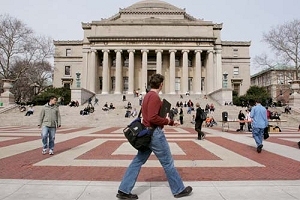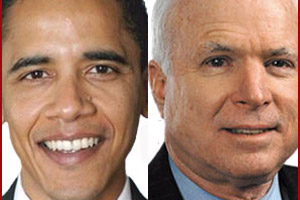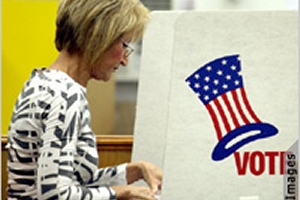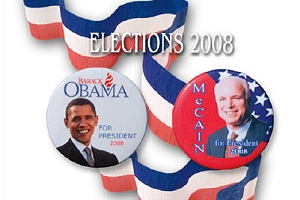America in context
International Student Enrollment at U.S. Colleges Breaks Records

The number of non-U.S. students enrolled in U.S. higher education institutions during the 2007-2008 academic year jumped 7 percent to a record total of 623,805, according to a report from the Institute of International Education (IIE). First-time enrollments increased 10 percent in 2007-2008, following a similar 10 percent rise the previous year.
“In today’s competitive international environment, the increase in enrollments noted in this year’s Open Doors data demonstrates again that the U.S. remains the premier destination for international students,” said Assistant Secretary of State for Educational and Cultural Affairs Goli Ameri in welcoming the report, Open Doors 2008. “The U.S. government joins the U.S. higher education community in a commitment to welcome international students to the United States. As someone who graduated from an American university as an international student, I have experienced America’s welcome personally and can testify that America’s universities not only accept and welcome international students warmly, but transform their lives.”
“The steady increase in the number of international students in the United States reflects actions taken by the U.S. government and many individual colleges and universities to ensure that international students know they are welcome here, and that we appreciate how they contribute to the intellectual and cultural environment on campus and in the wider community,” said IIE President Allan E. Goodman.
U.S. colleges and universities have “raised their visibility abroad and they are devoting more resources and improving infrastructures to support international students on their campuses,” said Constantine W. Curris, president of the American Association of State Colleges and Universities (AASCU), in welcoming the report. “AASCU remains committed to working with our members to enhance their international education efforts.”
The report also found that the number of U.S. students studying abroad continues to grow — up 8 percent in the 2006-2007 academic year to a total of 241,791, and up close to 150 percent over the past decade.
Among the key findings from Open Doors 2008: the most popular fields of study for international students in the United States in 2007-2008 were business and management (20 percent of total), engineering (17 percent) and physical and life sciences (9 percent), social sciences (9 percent), mathematics and computer sciences (8 percent), fine and applied arts (6 percent), health professions (5 percent), intensive English language (5 percent), education (3 percent), humanities (3 percent) and agriculture (2 percent). Fields growing the fastest in popularity were intensive English language (up 30 percent from the previous year) and social sciences (up 6 percent).
For the sixth year in a row, the University of Southern California in Los Angeles leads U.S. institutions in international student enrollment (7,115), with New York University coming in second (6,404). Other campuses in the top 10 are Columbia University in New York, New York (6,297); the University of Illinois at Urbana-Champaign (5,933), Purdue University in West Lafayette, Indiana (5,772); University of Michigan in Ann Arbor, Michigan (5,748); the University of California, Los Angeles (5,557); the University of Texas at Austin (5,550); Harvard in Cambridge, Massachusetts (4,948); Boston University (4,789); and the University of Pennsylvania in Philadelphia (4,610).
INDIA, CHINA, SOUTH KOREA SEND MOST STUDENTS
The leading country of origin for international students in the United States for the seventh consecutive year was India (94,563), with the number of Indian students increasing 13 percent over 2006-2007.
China ranked second with 81,127 students (up 20 percent), and South Korea was third with 69,124 (up 11 percent).
Other countries sending sharply higher numbers of students to study include Saudi Arabia (number nine, with 9,873 students, up 25 percent after a 129 percent increase last year), Nepal (number 11 with 8,936 students, up 9.3 percent) and Vietnam (number 13 with 8,769 students, up 45 percent after a 31 percent increase last year).
Open Doors was released at the beginning of the ninth annual International Education Week, which is sponsored jointly by the Department of State and the Department of Education. “During International Education Week, we have the opportunity to highlight for the citizens of other countries the value of experiencing an American education and American culture firsthand, and to demonstrate to American students the value of studying abroad and hosting international exchange students,” Secretary of State Condoleezza Rice said.
For additional information on studying in the United States, see Study in the U.S. and ECA’s EducationUSA Web site.
For more information on visa procedures and traveling to the United States, see www.travel.state.gov and the State Department electronic journal See You in the USA.
Information on Open Doors 2008 is available on the IIE Web site.
For more on International Education Week, see the Department of State Web site.
By Jeffrey Thomas
Staff Writer
Recently on America in context
Population Changes Likely to Influence U.S. Election
 In 2008 the U.S. electorate is younger, better educated and more diverse than it was when the nation first elected President Bush in 2000, and these population shifts will affect the November 4 election and help shape America’s future political landscape, analysts say.
In 2008 the U.S. electorate is younger, better educated and more diverse than it was when the nation first elected President Bush in 2000, and these population shifts will affect the November 4 election and help shape America’s future political landscape, analysts say.
U.S. Democracy Has Come a Long Way
 America's Founding Fathers would be "astounded" to see the presidential race of 2008, James Glassman, under secretary of state for public diplomacy and public affairs, said October 27.
America's Founding Fathers would be "astounded" to see the presidential race of 2008, James Glassman, under secretary of state for public diplomacy and public affairs, said October 27.
The Candidates
 Every presidential campaign is dramatic and historic, but as the fervor surrounding the 2008 election continues to build, U.S. voters and the rest of the world will want to consider the candidates' personal histories more closely. What sort of people rise to the top in the U.S. political system, what are their attributes, their sensibilities, and their strengths?
Every presidential campaign is dramatic and historic, but as the fervor surrounding the 2008 election continues to build, U.S. voters and the rest of the world will want to consider the candidates' personal histories more closely. What sort of people rise to the top in the U.S. political system, what are their attributes, their sensibilities, and their strengths?